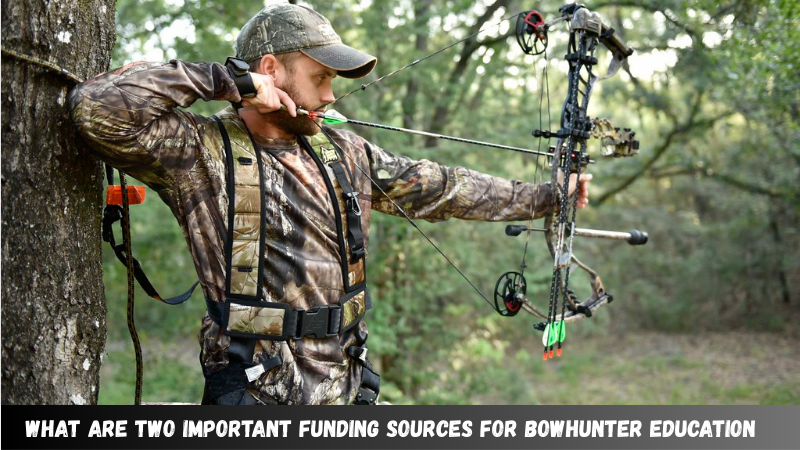Bowhunter education plays a critical role in promoting safe, ethical, and responsible hunting practices. While many hunters recognize the value of such programs, few stop to consider how they are funded. If you’ve ever wondered, what are two important funding sources for bowhunter education, you’re not alone.
This article breaks down the two key financial contributors that make bowhunter education programs possible across the United States, highlighting their impact on conservation and safety training for new hunters.
Why Bowhunter Education Matters
Before we dive into what are two important funding sources for bowhunter education, let’s understand its importance. Bowhunter education courses teach vital skills and knowledge, including:
- Proper use and handling of archery equipment
- Ethical shot placement
- Wildlife conservation and laws
- Tree stand safety
- Survival and first aid techniques
In many states, completion of a certified bowhunter education course is required for hunters using archery equipment, especially when hunting big game.
So, What Are Two Important Funding Sources for Bowhunter Education?
The two most important funding sources for bowhunter education in the United States are:
✅ 1. Federal Aid in Wildlife Restoration Act (Pittman-Robertson Act)
✅ 2. State Hunting License Fees
Let’s explore how each of these contributes to bowhunter education.
1. Federal Aid in Wildlife Restoration Act (Pittman-Robertson Act)
The Pittman-Robertson Act, enacted in 1937, is one of the most significant answers to the question:
What are two important funding sources for bowhunter education?
What Is It?
It’s a federal excise tax on the sale of firearms, ammunition, and archery equipment. The collected revenue is distributed to state wildlife agencies to support:
- Wildlife conservation
- Habitat restoration
- Hunter education programs, including bowhunter training
How It Funds Bowhunter Education:
A portion of this funding is earmarked specifically for educational initiatives. States use this money to:
- Develop curriculum and instructional materials
- Provide online education platforms
- Train certified instructors
- Organize field activities and safety demos
Thanks to the Pittman-Robertson Act, hunters essentially reinvest in conservation and education each time they purchase gear.

2. State Hunting License Fees
The second key source, when considering what are two important funding sources for bowhunter education, is state hunting license fees.
What Are They?
Every licensed hunter pays a fee to hunt legally in their state. These fees vary based on:
- Type of game being hunted
- Resident vs non-resident status
- Archery-specific permits or tags
How They Help Fund Bowhunter Education:
State wildlife agencies allocate a portion of these license fees to:
- Offer subsidized or free bowhunter education courses
- Improve training facilities and shooting ranges
- Fund outreach to youth and underserved communities
- Develop mobile training apps and online testing portals
License fees ensure that hunters directly support the future of hunting education and conservation.
Other Supplemental Sources (But Not Primary)
While the focus of this post is what are two important funding sources for bowhunter education, it’s worth noting that additional, less significant sources may include:
- Donations from hunting organizations (e.g., National Bowhunter Education Foundation)
- Grants from conservation groups
- Partnerships with outdoor retailers or archery clubs
These contributions are helpful but not as consistently relied upon as the federal and state funding sources.
The Broader Impact of Funding Bowhunter Education
Understanding what are two important funding sources for bowhunter education also means recognizing their broader value:
- Conservation Funding: Both funding streams support wildlife conservation, not just education.
- Hunter Safety: Well-funded programs lead to fewer hunting-related accidents.
- Increased Participation: Low-cost or free training removes barriers for new hunters.
- Public Support: Demonstrating responsible practices builds positive public perception of hunting.
Final Thoughts
So, what are two important funding sources for bowhunter education? They are:
- The Federal Aid in Wildlife Restoration Act (Pittman-Robertson Act)
- State hunting license fees
Together, these sources ensure that bowhunter education programs are accessible, effective, and widely available. They not only support the future of hunting but also reinforce ethical wildlife conservation and outdoor safety. Every time you purchase gear or a hunting license, you’re helping educate the next generation of safe and responsible hunters.
If u want to explore more must visit this site : https://sourcemaui.com/
